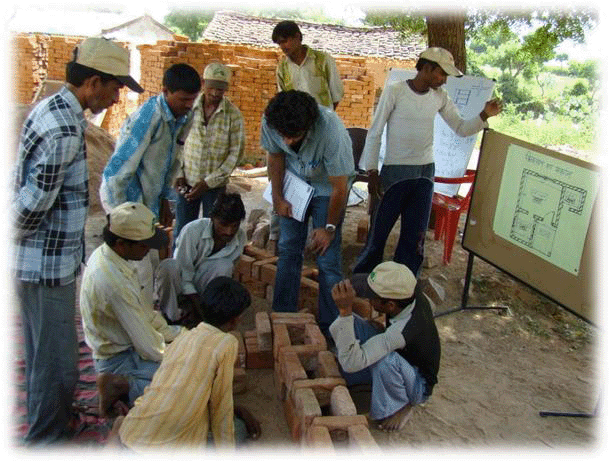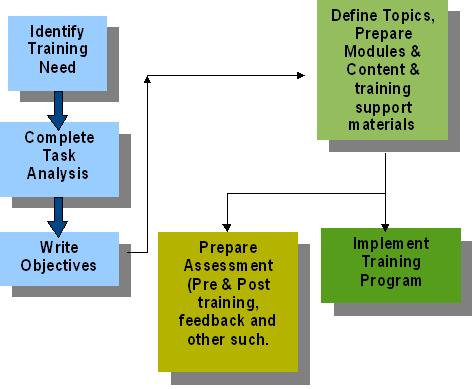The
skill level and educational attainment of any workforce determines the
productivity as well as the ability to adapt to the changing industrial
environment. A majority of the Indian workforce does not possess
marketable skills, which is an impediment in getting decent employment
and improving one’s economic condition. While India has a large young
population, only 5% of the Indian labour force in the age group of 20-24
years has obtained vocational skills through formal means, whereas the
percentage in industrialised countries varies between 60 and 96%. About
63% of the school students drop out at different stages before reaching
Class X. Also, only about 2.5 million vocational training seats are
available in the country, whereas about 12.8 million persons enter the
labour market every year. Even out of these training places, very few
are available for early school dropouts. These statistics signify that a
large number of school dropouts do not have access to skill development
for improving their employability. The educational entry requirements
and long duration of courses in the formal training system are some of
the impediments for a person of low educational attainment to acquire
skills for his livelihood. Further, the largest share of new jobs in
India is likely to come from the unorganised sector that employs up to
93% of the national workforce, but most of the training programmes cater
to the needs of the organised sector.
The Hon’ble Minister of Finance, during the budget speech 2005-06, made
the following announcement:
To meet the demand for specific skills of a high order, a Public
Private Partnership between Government and Industry is proposed to
promote a skills development programme under the name ‘Skill Development
Initiative’.
Accordingly, the Ministry of Labour and Employment undertook the
development of a new strategic framework for skill development for early
school drop outs and existing workers. The main objective of the scheme
is to provide employable skills to school leavers, existing workers, ITI
graduates, etc. Existing skills of the workforce are also tested and
certified under this scheme. Priority is given to those above the age of
14 years, who are now working as child labour, to enable them to learn
employable skills and get gainful employment. (Source:
http://www.dget.nic.in)

The TARA Livelihood Academy (TLA) is proud to announce its registration
as a Vocational Training Provider (VTP) under the Ministry of Labour and
Employment to impart skill-based training programmes which lead to a
NCVT (National Council for Vocational Training) certificate to the
participants. TLA is eligible to conduct training programmes in six
modules including Hospitality, Information & Communication Technology
(ICT), Retail, Construction, Garment Making, and Food Processing &
Preservation. The time taken to gain qualifications will vary according
to the pathway taken and is made flexible for people with different
backgrounds and experience. Duration has been prescribed in hours in the
curriculum of individual module, which are based on the content and
requirements of a MES Module.
The DGE&T has appointed assessing bodies to evaluate the competencies of
the trained persons. The assessing bodies are independent agencies, not
involved in conducting the training programmes. This, in turn, will
ensure quality of training and credibility of the scheme.
Training - An Approach to Build
the Capacity of Village Groups
Capacity building is the process of developing and strengthening the
skills, instincts, abilities, processes and resources that communities
need to survive, adapt and thrive in the fast-changing world.
Under the SDC - Sustainable Civil Society Initiatives to address Global
Environmental Challenges, project capacity building through training is
one of the ways to enhance the ability of affected people to organise
themselves and secure the necessary support and resources that help them
to adopt practices that reduce vulnerability as well as carbon
footprints.
Training and capacity building programmes are being organised for three
specific set of actors, viz., groups whose skills and practices are
sought to be improved (farmers, women’s groups and artisans) and those
groups whose support will be crucial in enabling the target groups to
improve their practices on a large scale (Panchayati Raj Institutions,
District officials, Government departments, community based
organisations, etc.). To enhance the impact of the efforts, different
group models at the village level are formed, such as SHGs (Self Help
Groups) and CIGs (Common Interest Groups).

Methodology and Approach
• Understanding the present capacities of the target groups
• Understanding the problems faced by these groups
• Understanding the specific intervention points to enhance the
capacities of the target groups
• Knowing the possible capacity building methods to enhance the
capacities
Artisan Cluster (Masons’ Group)
The construction sector is among the few sectors that provide livelihood
opportunities in Bundelkhand region. It is increasingly becoming a major
source of GHG emissions from the region. Masons form a highly vulnerable
segment in terms of livelihood security and, thus, to support this group
with skills, technological options and stakeholder linkages are really
required. It is necessary to enhance the livelihood security of the
artisans by institution strengthening, skill building on construction of
eco-buildings and influencing local and national policies to promote
sustainable practices in rural construction.
To build the masons’ capacity, their need assessment was done by
following different mechanisms, like Focus Group Discussions (FGDs),
detailed survey questionnaires, and personal interviews of a few masons.
The major findings regarding their training needs are given below.

The training team found that the first and foremost thing that a mason
needed was to be brought into a group. A model was then prepared and
first training was conducted on ‘Group Development & Management’ for 45
masons, and a training session on Rat Trap techniques for 12 masons.
Farmers’ Cluster
The Bundelkhand region’s economy is predominantly based on agriculture.
Failure in agriculture has become a cyclical phenomenon here. Though the
major sources of irrigation in the region are wells, the water in the
wells depends on rains. Landless households and the large tribal
population of Sahariyas depend on daily wage unskilled labour work in
agricultural fields and stone quarries for their livelihoods.
To make the farmers aware about efficient agricultural practices is one
of the important ways to ensure livelihood security.
The major identified areas for training and capacity building of
farmers’ groups are:
• Improved irrigation methods
• Cropping systems
• Agro forestry
• Improved farming practices
• Vegetable production and management
• Animal husbandry
Finally, 44 farmers from 11 villages in Jhansi district are being
targeted under this project. As these 44 farmers are into mainstream
project activities and the indirect target is to work with 100 farmers,
it was necessary to place these farmers into groups. The concept of
Common Interest Groups (CIG) was shared with them and they agreed to
work on it. A two-day training on Group Development and Management was
conducted initially to make the farmers visualise the project objectives
and the way they would be working with each other to achieve those
objectives. A three-day training programme was also organised on Package
of Practices (POP) for mustard and wheat.
Women’s Energy Cluster
In the case of women, it is necessary to enhance their stake in the
management of natural resources and value addition by engaging them as
key players in the process of triggering income generation, value
addition and resource management, based on renewable energy. With a
successful pilot already operational, the project seeks to package this
initiative as a replicable model having proper institutional, legal and
business aspects in place. Around 40 women are part of this project from
the Orchha cluster of Tikamgarh district (Madhya Pradesh). To enhance
their capacities so as to achieve the above-mentioned objective, a
Training Need Assessment (TNA) was done to understand the key
intervention areas for capacity enhancement. The same methodology was
adopted (FGDs, survey questionnaires with expert facilitation and
individual interviews) to understand the gap.
The major findings of TNA exercise were:
• Women’s literacy status requires attention
• SHGs and their functionality need proper attention
• Micro enterprise development and management
• Accounting and book keeping is vital
• Livestock management needs to be managed better
• Marketing/selling and negotiation skill to be developed
All 40 women who undertook the Adult Literacy programme for more than a
month learned to read and write a little. At least now they are very
confident and are using a pen to sign, and not pressing their thumbs.
• Most of the women (around 50) were part of SHGs but had never realised
its importance due to various reasons. After having completed the
training programme, they gained the confidence to strive for
income-generation activities
• There is a sense of strong self motivation towards natural resource
management and enterprise development on a smaller level
Within a three-year timeframe, it is proposed to develop and demonstrate
certain practical methods by which rural communities and local
institutions in Bundelkhand are able to maximise value addition to local
resources, thereby creating greater livelihood security and minimising
their carbon footprint. To do the same, a different mechanism is being
followed that includes exposure visits, training programmes, liaison and
networking with different stakeholders, etc., in order to achieve the
expected outcome of the projects.
On every training programme, a pre- and post-participant’s knowledge
assessment is also being carried out to understand their levels of
learning and the various issues which help in re-designing/defining the
strategies.
q
Madhuban Pandey
mpandey@devalt.org
Back to Contents

